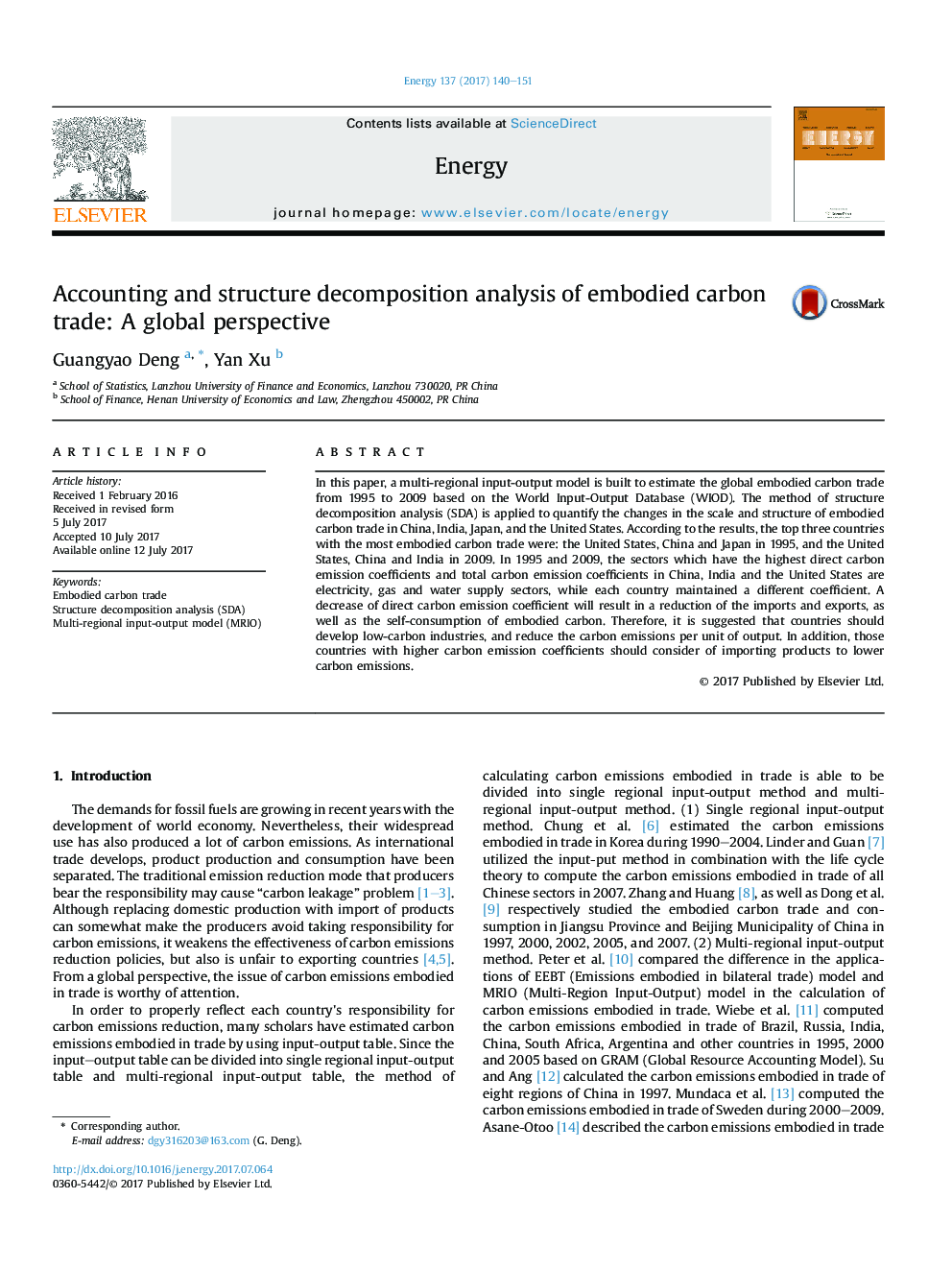| کد مقاله | کد نشریه | سال انتشار | مقاله انگلیسی | نسخه تمام متن |
|---|---|---|---|---|
| 5475744 | 1521414 | 2017 | 12 صفحه PDF | دانلود رایگان |
عنوان انگلیسی مقاله ISI
Accounting and structure decomposition analysis of embodied carbon trade: A global perspective
ترجمه فارسی عنوان
تجزیه و تحلیل تجزیه و تحلیل حسابداری و ساختار تجارت کربن تجسم: دیدگاه جهانی
دانلود مقاله + سفارش ترجمه
دانلود مقاله ISI انگلیسی
رایگان برای ایرانیان
موضوعات مرتبط
مهندسی و علوم پایه
مهندسی انرژی
انرژی (عمومی)
چکیده انگلیسی
In this paper, a multi-regional input-output model is built to estimate the global embodied carbon trade from 1995 to 2009 based on the World Input-Output Database (WIOD). The method of structure decomposition analysis (SDA) is applied to quantify the changes in the scale and structure of embodied carbon trade in China, India, Japan, and the United States. According to the results, the top three countries with the most embodied carbon trade were: the United States, China and Japan in 1995, and the United States, China and India in 2009. In 1995 and 2009, the sectors which have the highest direct carbon emission coefficients and total carbon emission coefficients in China, India and the United States are electricity, gas and water supply sectors, while each country maintained a different coefficient. A decrease of direct carbon emission coefficient will result in a reduction of the imports and exports, as well as the self-consumption of embodied carbon. Therefore, it is suggested that countries should develop low-carbon industries, and reduce the carbon emissions per unit of output. In addition, those countries with higher carbon emission coefficients should consider of importing products to lower carbon emissions.
ناشر
Database: Elsevier - ScienceDirect (ساینس دایرکت)
Journal: Energy - Volume 137, 15 October 2017, Pages 140-151
Journal: Energy - Volume 137, 15 October 2017, Pages 140-151
نویسندگان
Guangyao Deng, Yan Xu,
